Borage is an annual herb with edible flowers and beneficial properties. The plant readily produces seed after flowering, and then quickly releases the seeds back into the garden. Learn how to harvest borage seeds, to plant in the herb garden next season.
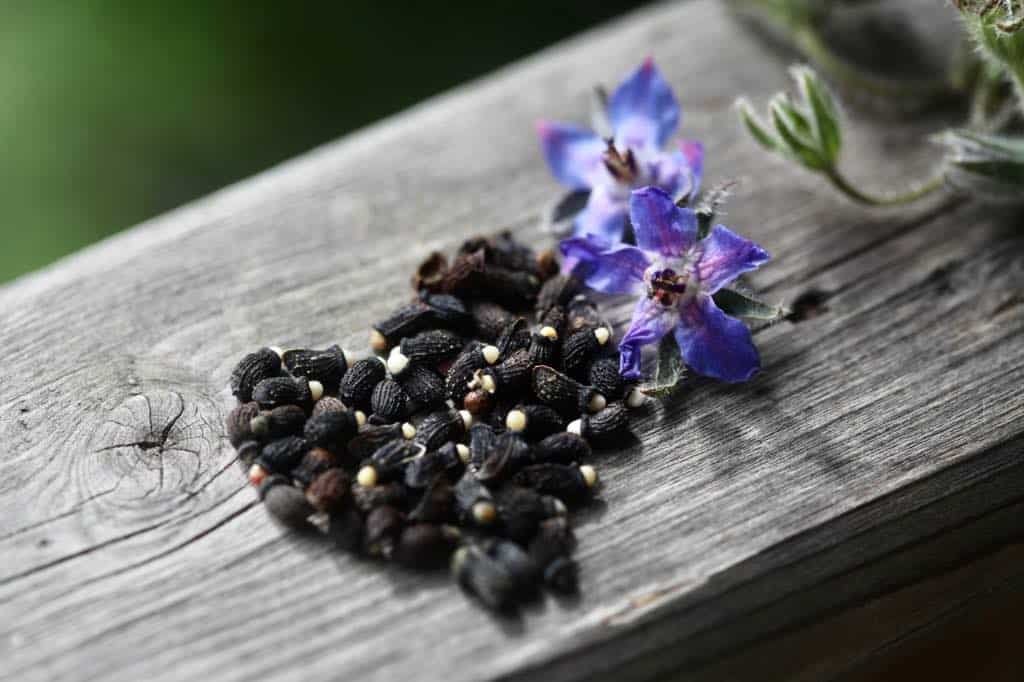
We have grown borage in the flower and herb garden for several seasons now. It also grows well in a container garden, and we grow it in raised beds as well.
Borage, or borago officinalis, is an amazing plant with edible flowers, which are fantastic to use in culinary creations and botanical baking projects. I have also used the beautiful blue flowers in edible flower ice cubes, which help to garnish fancy drinks.
Borage flowers start out pink, then turn purple, then finally turn blue.

The intense blue, pink, or lavender star-shaped flowers are easy to harvest, and just the right size for decorating salads and baking. You can even make a borage tea with the blooms.
The borage leaves are also edible, and have a mild cucumber flavor. Young leaves are the most tender, and the best stage to harvest for culinary use.
Borage is known to have nutritional benefits as well, and is an important plant in so many ways.
Borage, starflower, and bee plant are some of the common names for the borage herb.
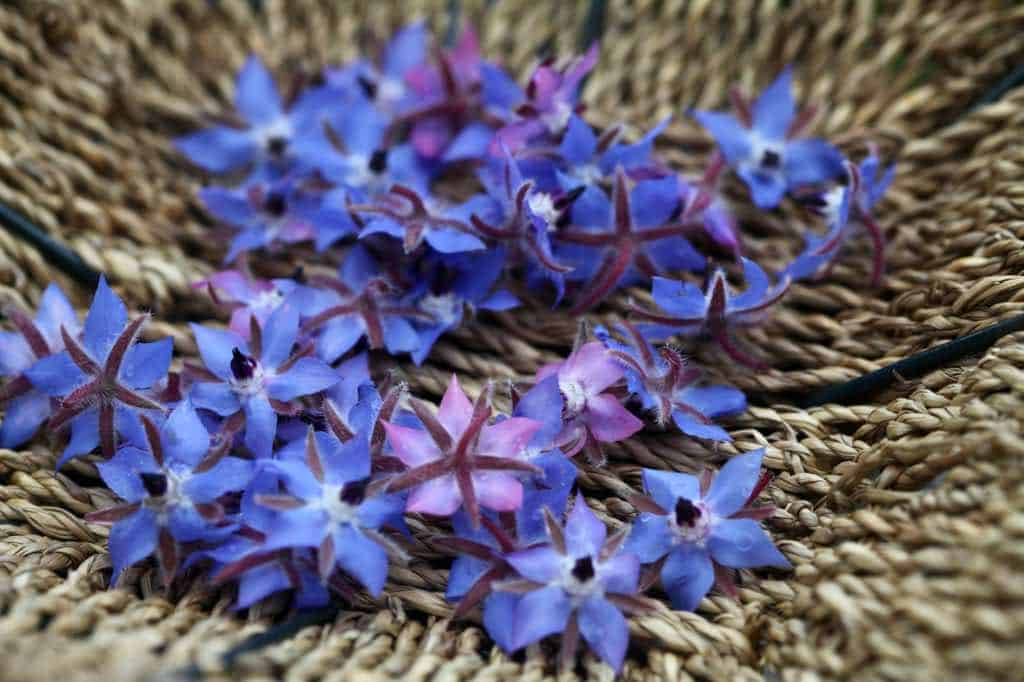
Why Save Borage Seeds?
Borage has multiple uses, and is a beneficial plant for the garden space.
As described, borage is an edible herb with culinary use and nutritional benefits.
Borage is also a good companion plant in the vegetable garden, drawing pollinators and honey bees, and repelling pests such as the tomato hornworm, and cabbage worms.
The plant can also be used as a green manure and cover crop, acting as a fertilizer for the soil. Leave the plants in place to compost back into the soil at the end of the season, to add nutrients back into the soil.
It's important to know that borage is also a hardy annual, and so harvesting seeds at the end of the season can allow you to perpetuate the plant in your garden.

The plant has a tendency to self seed as well, so will likely produce new volunteer plants all on it's own.
This year our borage patch in the flower garden returned with many new borage seedlings, all self seeded from last year's crop.
These new plants grew quickly, and were larger and healthier than even the parent plants from last season, as they had germinated at just the right time in the garden without disruption.
Saving seeds from your borage plants will allow you to economically grow borage, saving on the cost of seeds.
The plants that you grow from your own seeds will become adapted to your area, contributing to a sustainable crop.
You will also be able to share seeds with the community, if you harvest enough to share from your plant.

What Does Borage Look Like When It Goes To Seed?
Borage flowers bloom in succession on each stem, so when the plant is in bloom, there are always flowers blooming towards the top of the stem, and spent flowers below.
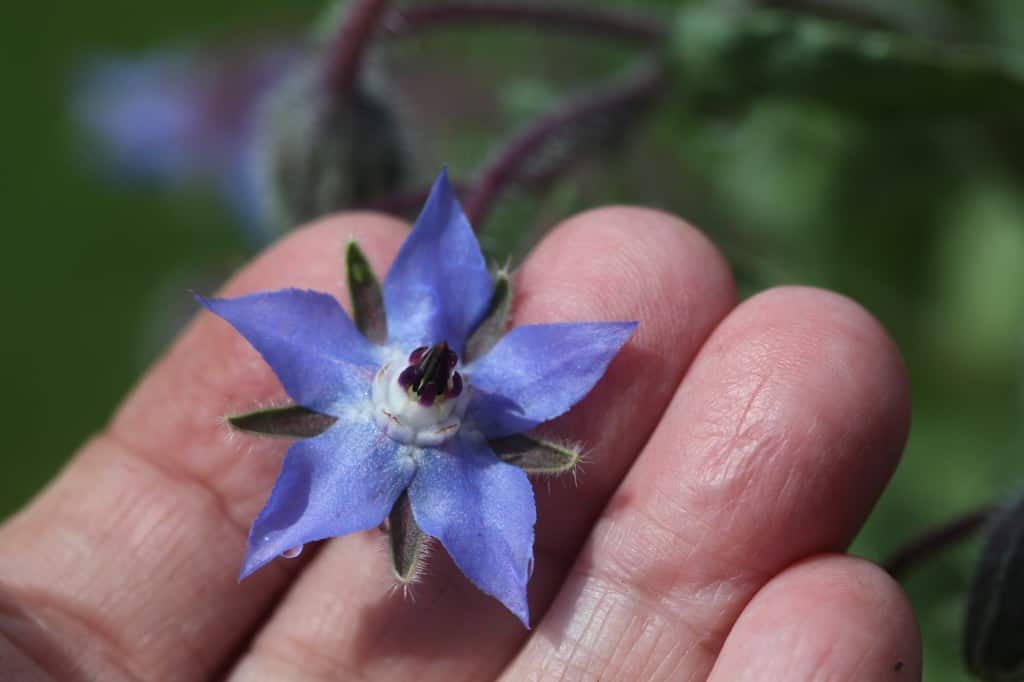
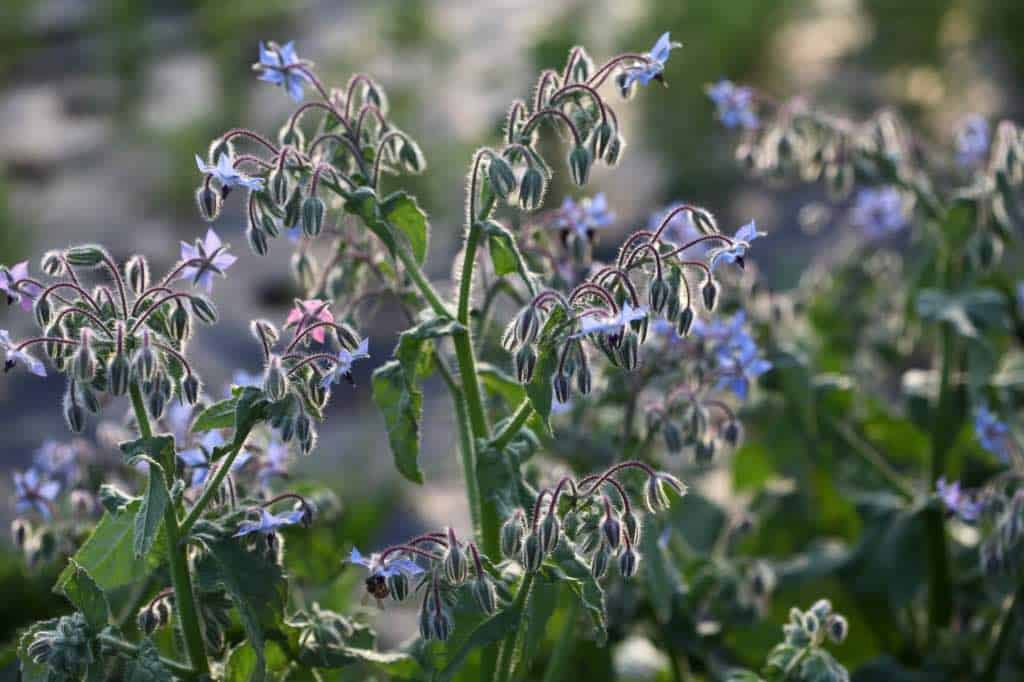
The flowers of borage will fade after blooming, and then eventually drop to the ground. Those that have been pollinated will develop seeds, inside little seed pods along the stem where the flowers once were.
The seed heads form when the bracts of the flower head close up, after the spent flower drops from the plant. Within these bracts the seeds will form, right at the back of the pod.

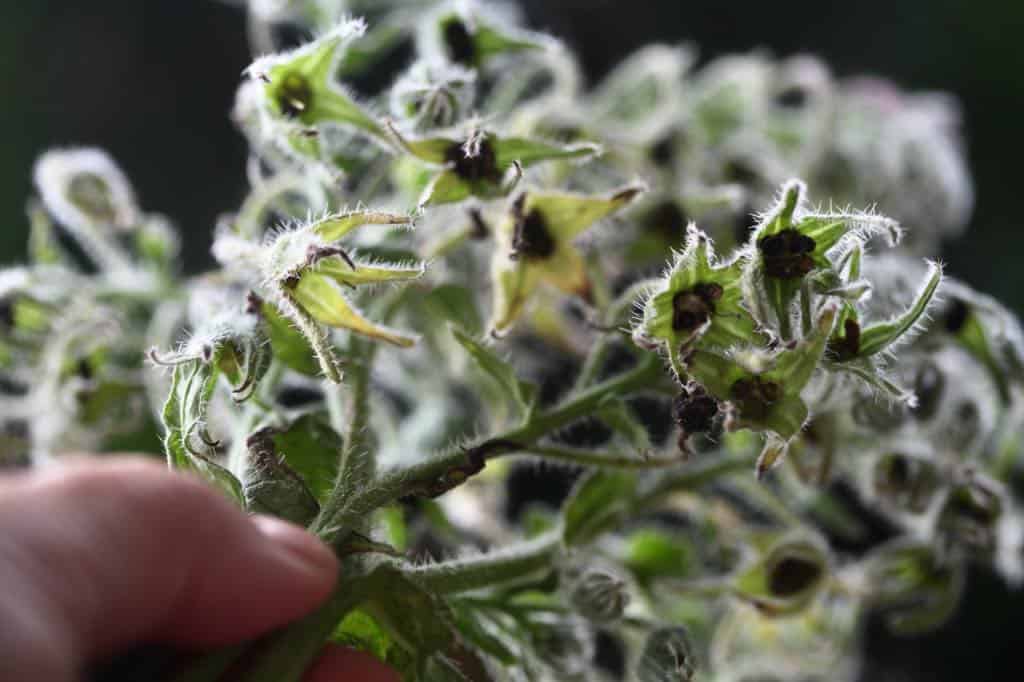
You can easily pry apart the structures of a borage seed pod to observe the seeds inside. This way you can determine if the seeds are mature and ready for harvesting.
These seeds will mature, and then fall from the plant to the ground, when they are ripe. The seeds don't stay long in the seed pod, and are sometimes hard to catch for collection.
As a result, the borage plant easily self seeds, producing new volunteer plants from year to year.
If you are planning to harvest borage seeds, it is important to catch the seeds before they fall off the plant.
It is also important however to leave them in place on the plant until they become mature, so that they will be viable seeds for harvesting.
This makes the process a bit tricky, because as soon as the seeds become mature, they are released by the plant.
There is not much time therefore to get in there and catch them while they are still on the plant.
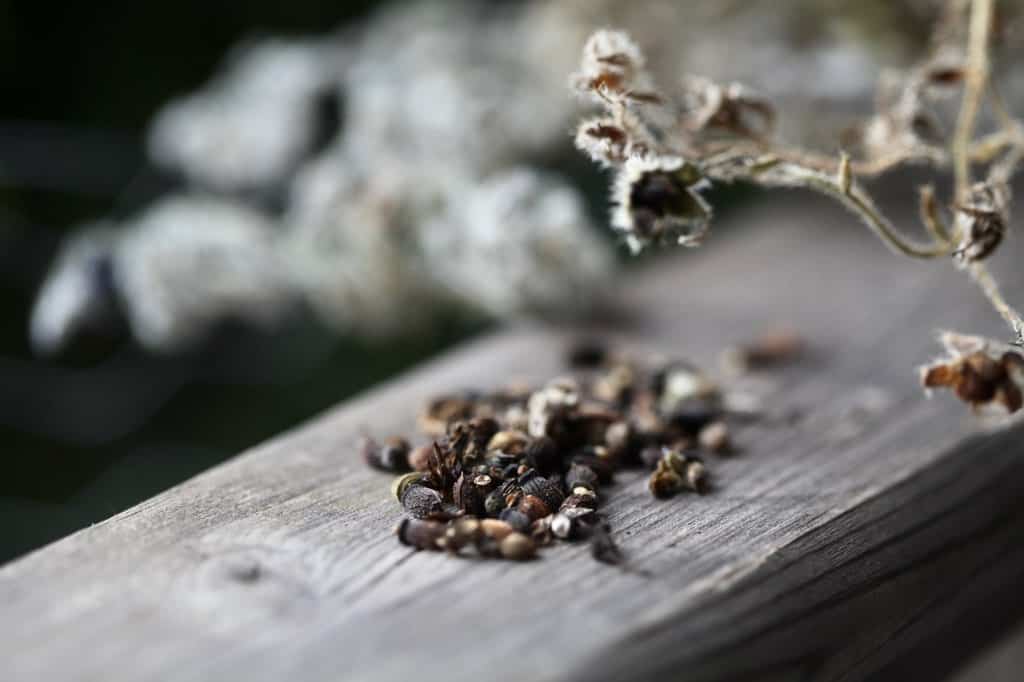
What Do Borage Seeds Look Like?
Borage seeds are tiny, dark, oval-shaped seeds which are narrower on each end like a barrel.
The seeds are approximately 0.5 cm in length.
There is a small white tip on the end of each seed, where the seeds were originally attached to the seed pod.
The seeds are green when immature, then turn black or dark brown in color when they are ready for harvest. They can also be grey, most often when they are dried.


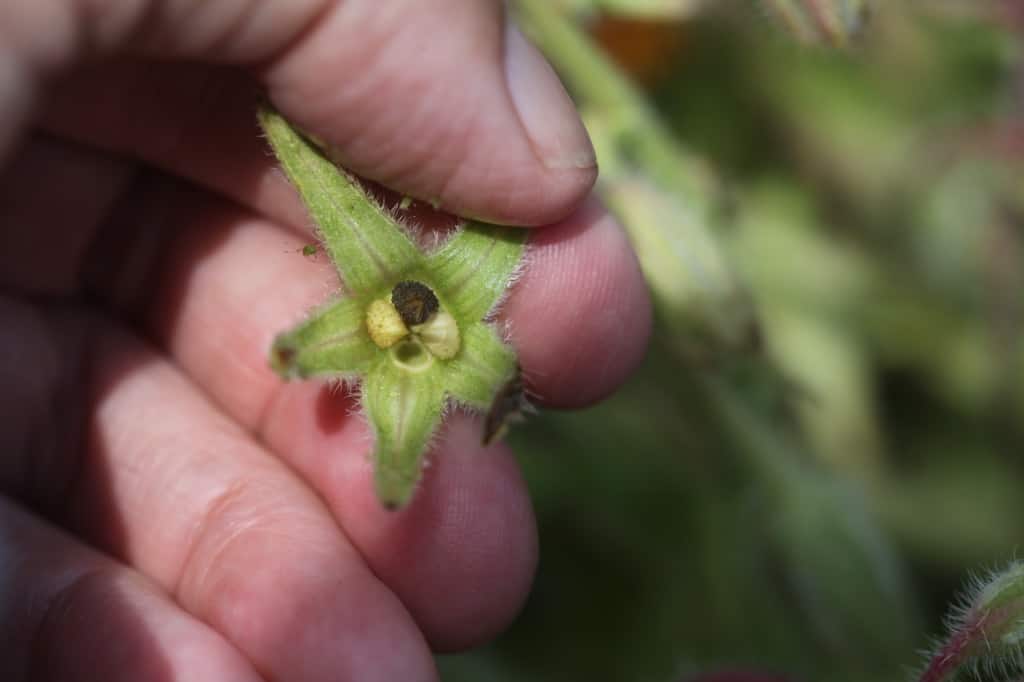
Open up the bracts of the plant to look inside to see the seeds growing there.
You will find up to four seeds inside the seed head, although often there are less, as the plant may have released some. And sometimes there are none.
Sometimes you will find seeds of different stages of maturity within one seed pod.
Interestingly, borage seeds have a very similar appearance to comfrey seeds. Comfrey is related to borage, as the plants are both in the Boraginaceae family.
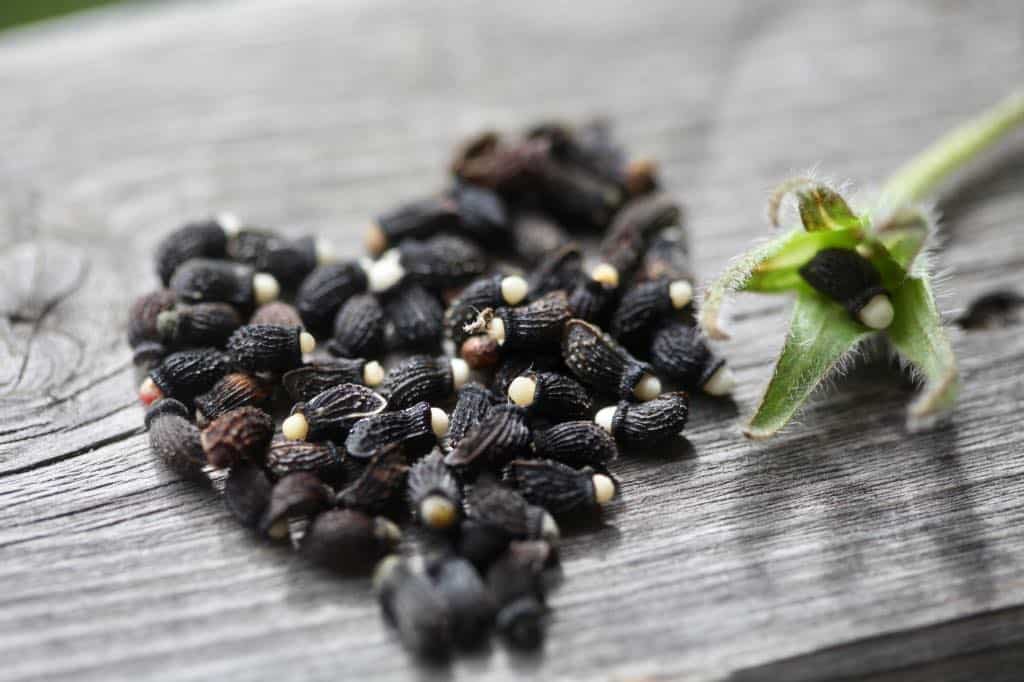
Harvesting Borage Seeds
Harvesting borage seeds is a very simple process.
Yet the quick seed drop of mature seeds from the plant can make catching the seeds somewhat difficult.
When To Harvest The Seeds
The seeds of borage should be harvested when they are mature, and dark in color, such as grey, dark brown or black.
The seeds are ready for harvest when they have turned this color, and easily fall away from the seed pod.
Since borage flowers bloom in succession along each stem, the seed pods along each stem will also be in different stages of maturity.
You can harvest borage seeds throughout the growing season, starting after the first set seeds have matured. So check daily, or every other day, to collect more seeds as they are ready for harvest.

How To Harvest The Seeds
There are a number of ways to harvest borage seeds.
Harvest From The Pods
Bring a small container with you for harvesting individual seeds.
The borage seeds are easy to harvest if they remain in the seed pods and aren't released before you find them.
Gently open up the bracts on the outside of the pod to discover the seeds within, and gently roll them out of their secured position. Mature seeds will easily detach from the pod.
Place the harvested seeds into your container.

Harvest Fallen Seeds
Another way to collect borage seeds is to look on the ground under the plant.
If you have been checking the plant daily to collect newly matured seeds, and find minimal or no seed, you may not be catching them on time. Check on the ground underneath the plant for any freshly fallen seeds.
It's also a good idea to place a tray or a cloth down under the plant, to catch the seeds as they fall. This will make it easier to find the seeds.
Collect any seeds from under the plant, as many will be mature viable seeds for planting.
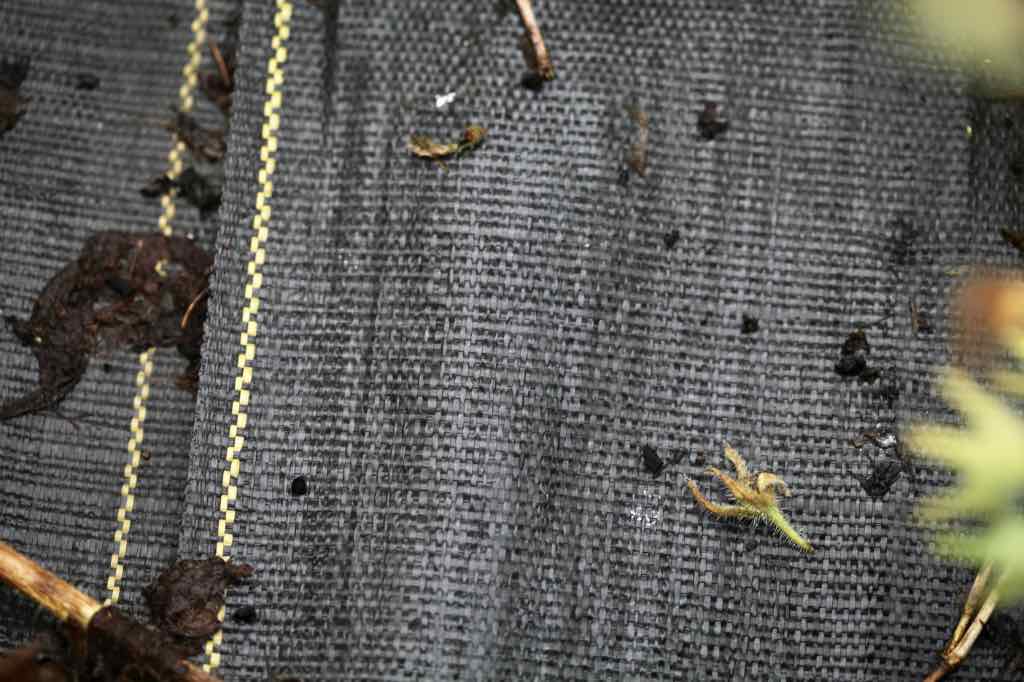
Harvest From Pruned Stems
Another way to harvest borage seeds is to cut some of the plant stems, especially if many of the flowering stems have become spent and are starting to turn yellow.
Cutting these stems is essentially giving the plant a pruning. As well, you may be able to find a few seeds along the harvested stems.
The yellowed open bracts along the stem will generally be free of seeds, however the green pods above these yellowed bracts may still contain a few seeds.
When you cut the stems, gently place them into a container, to catch any seeds which may fall during the trip from the garden, to an indoor location.
Once inside, lay the stems on a counter, and quickly go through them to collect any seeds.
From my experience, you will probably not get a big harvest of borage seeds at any one time, however you will get enough for planting out again next year, and maybe enough to share as well.
Toss these harvested stems back into the garden when you are done, as they are an excellent green mulch and will add nutrients to the soil.
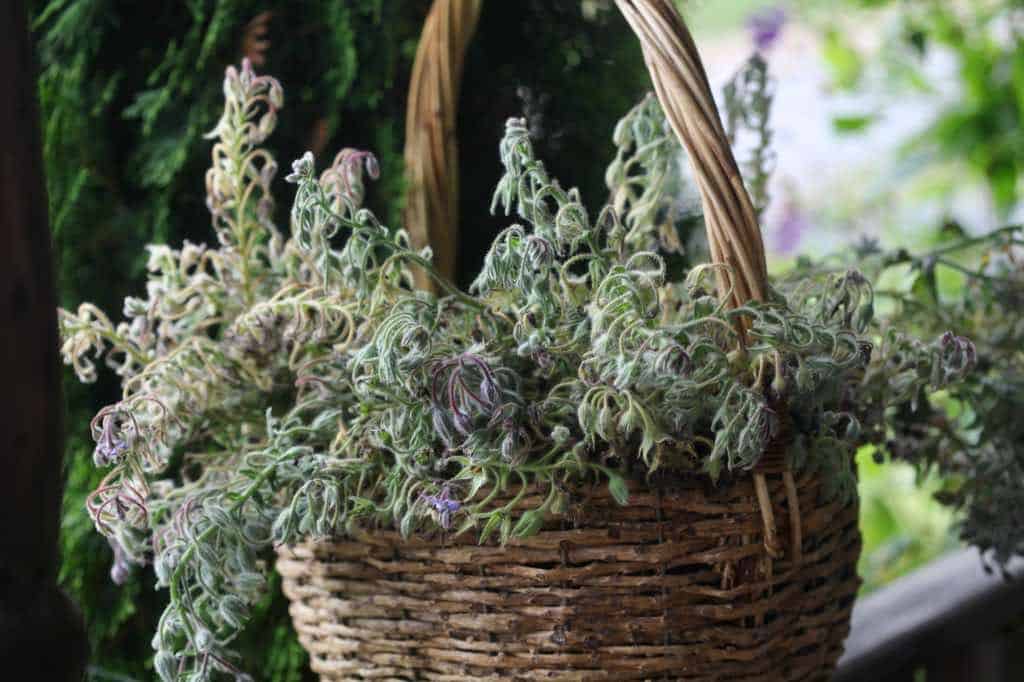
Storing Borage Seeds
Dry the borage seeds for at least 24 to 48 hours before storing away.
Observe the seeds carefully before storage, especially if you have collected some from the ground.
Discard any seeds which are small, damaged or moldy.
Save seeds which are plump and healthy. The seeds will shrink slightly, as they become dried.
Store seeds in a paper envelope, labeled with the seed type, and the date of storage.
The seeds should be stored in a cool, dark and dry place until ready for planting.

Frequently Asked Questions
Does Borage Self Seed?
Borage is a self-seeding plant, and freely self seeds.
The seeds generally drop straight to the ground under the plant, and will germinate and grow in the same place the following season.
How Long Does Borage Self Seed?
Borage will self seed throughout the growing season, as the plant continues to produce seeds all season long.
The borage blooms are magnets to bees and other pollinators, and therefore the flowers are easily pollinated, forming seeds.
As the seed pods develop, the seeds become mature, and then are released to the ground.
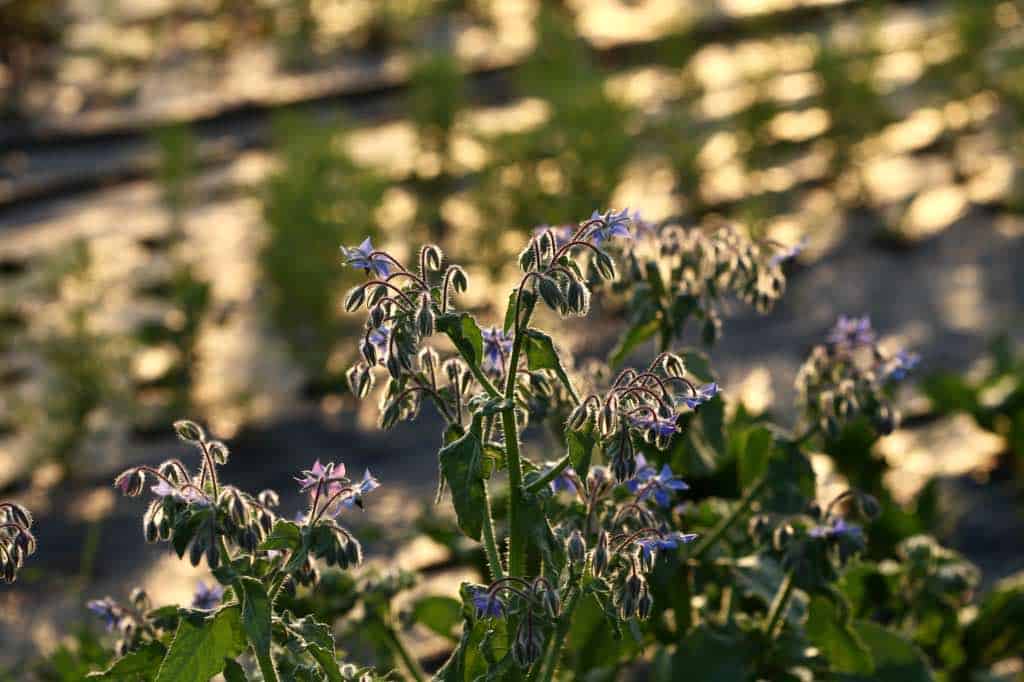
Does Borage Need Pruning?
Borage is a beautiful plant with large green hairy leaves, and bright blue flowers atop glistening, silvery, and hairy stems.
The plant is beautiful when in full bloom, and the hairs covering the plant give it a silvery glow in the sunlight.
The borage plant however can become unsightly towards the end of it's life cycle, when the flowers are no longer blooming and the stems become yellow.
Pruning is a great way to trim back the plant, tidy it up, and encourage new growth.
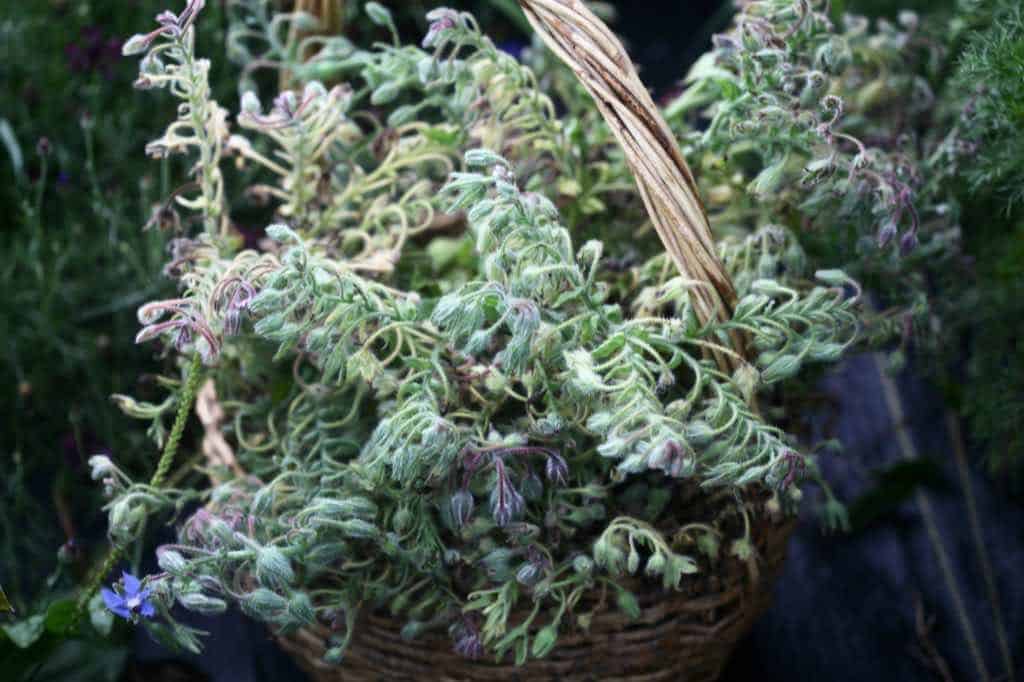
Conclusion
Saving borage seeds throughout the growing season is just such a sustainable and smart activity.
Save those seeds and plant borage out next season.
Borage is a fabulous flowering herb to grow, and a great addition to any garden.
If you grow vegetables, be sure to plant borage as a companion plant, to draw beneficial insects into the garden, and to repel those pests.
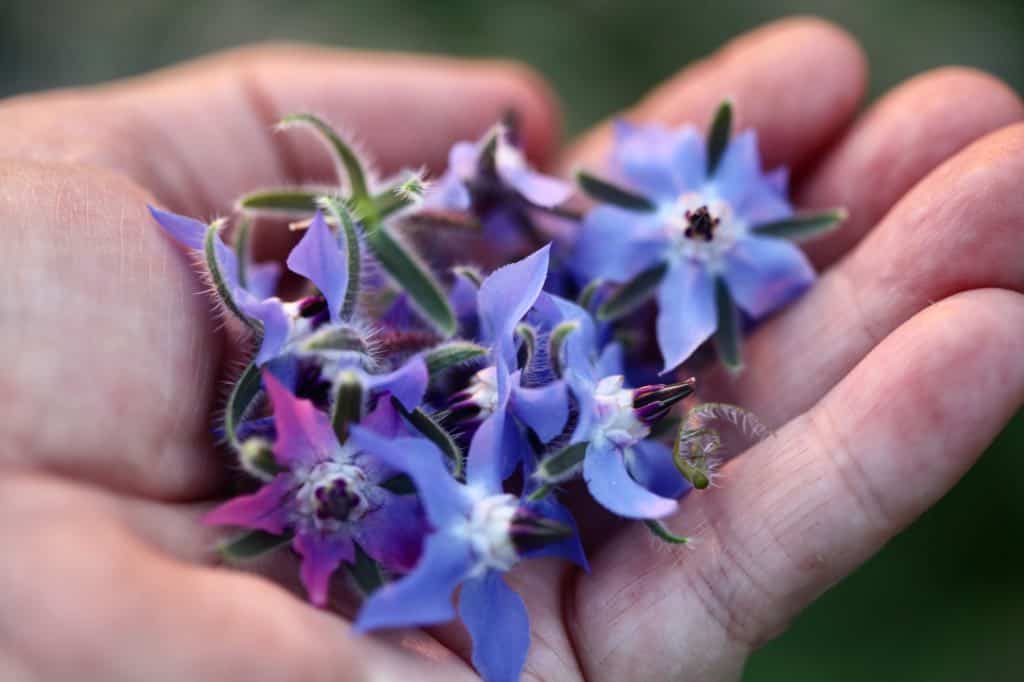
The beautiful blue flowers have a cucumber-like flavor, and the fresh flowers are great to add to ice cubes to decorate your summer drinks.
Harvest the seeds from the plant as they mature throughout the summer, to save for planting out next season.
It is likely that you will also have some volunteer plants from self seeding, to also enjoy in the garden space as well.

Other Posts You May Like:
See the Web Story on Harvesting Borage Seeds!
PIN IT FOR LATER!
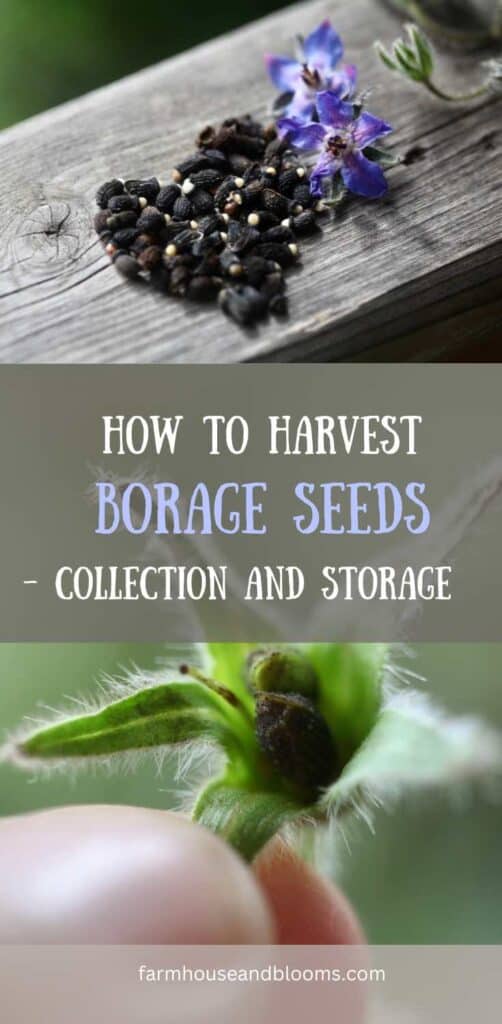
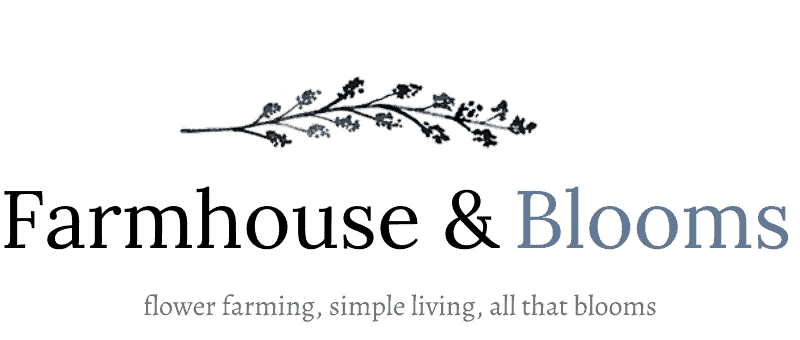

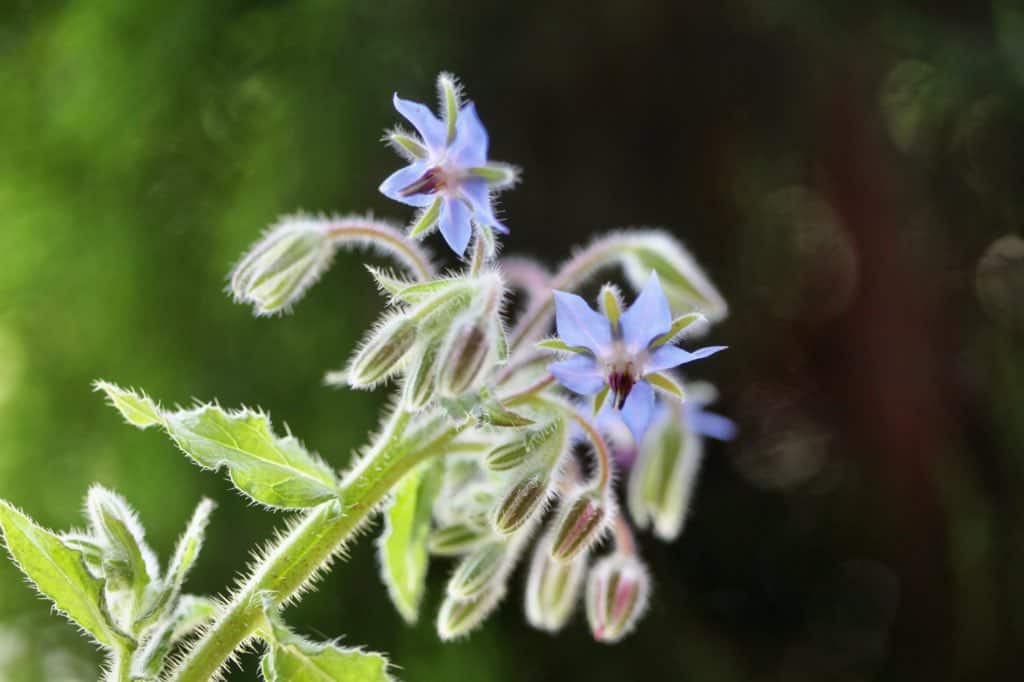
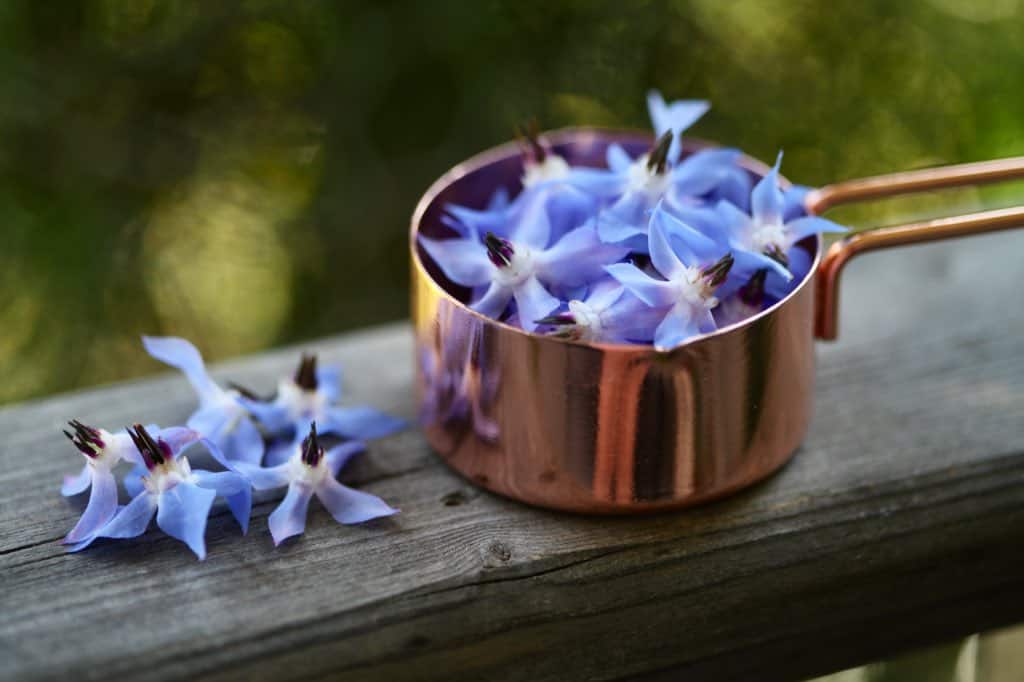
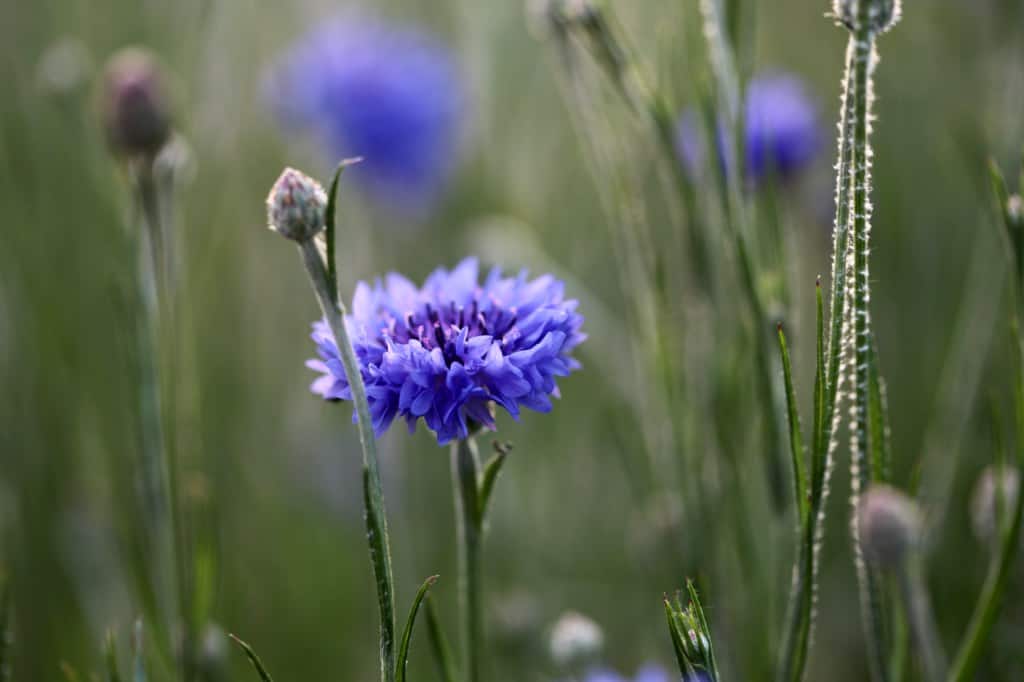
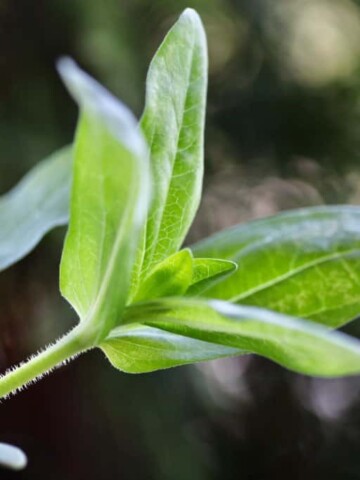
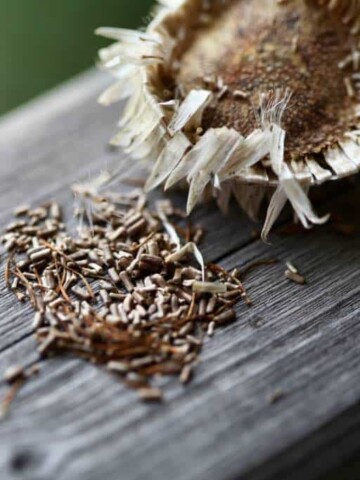
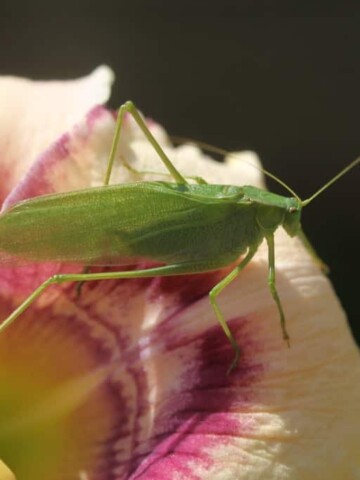

Leave a Reply